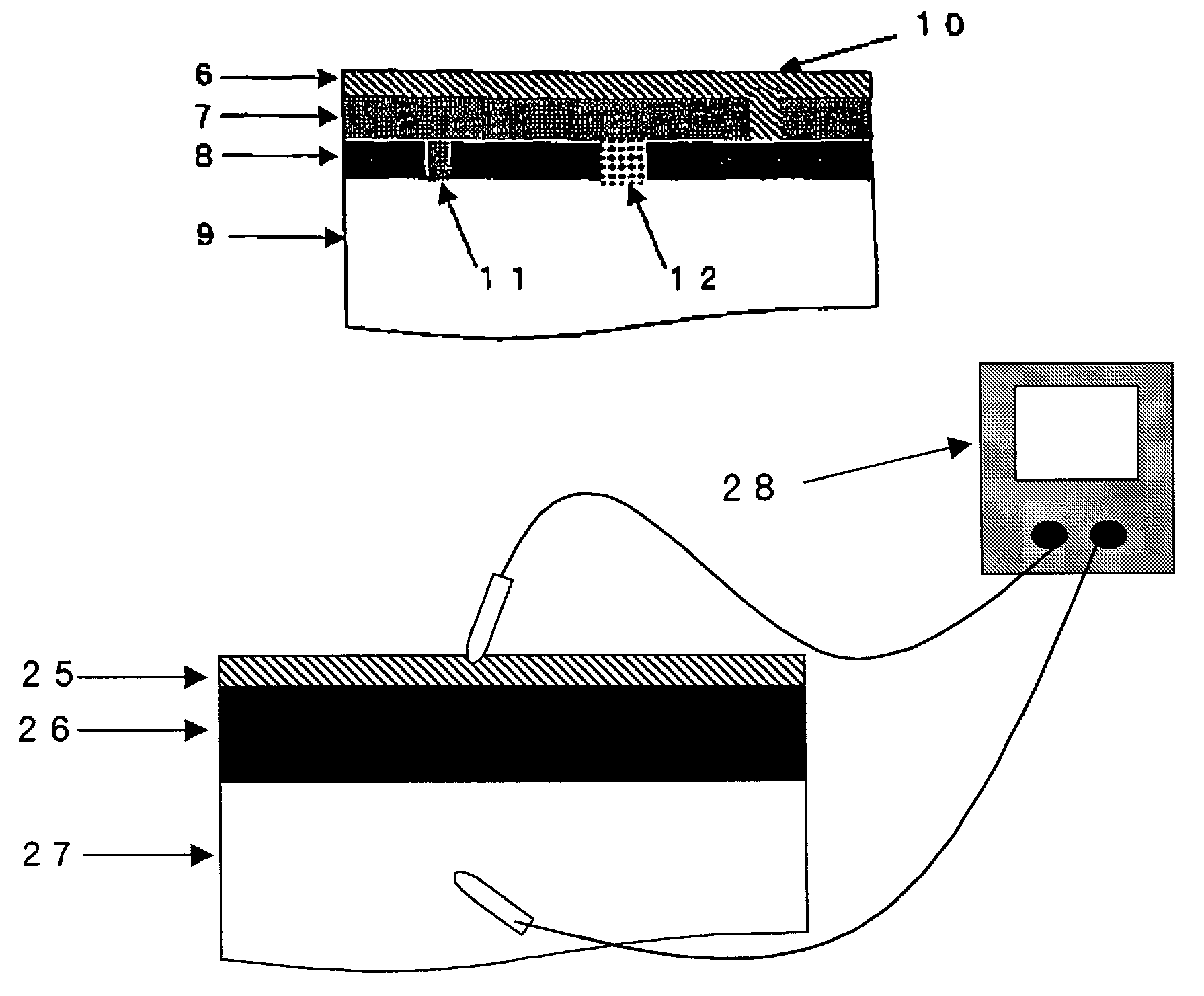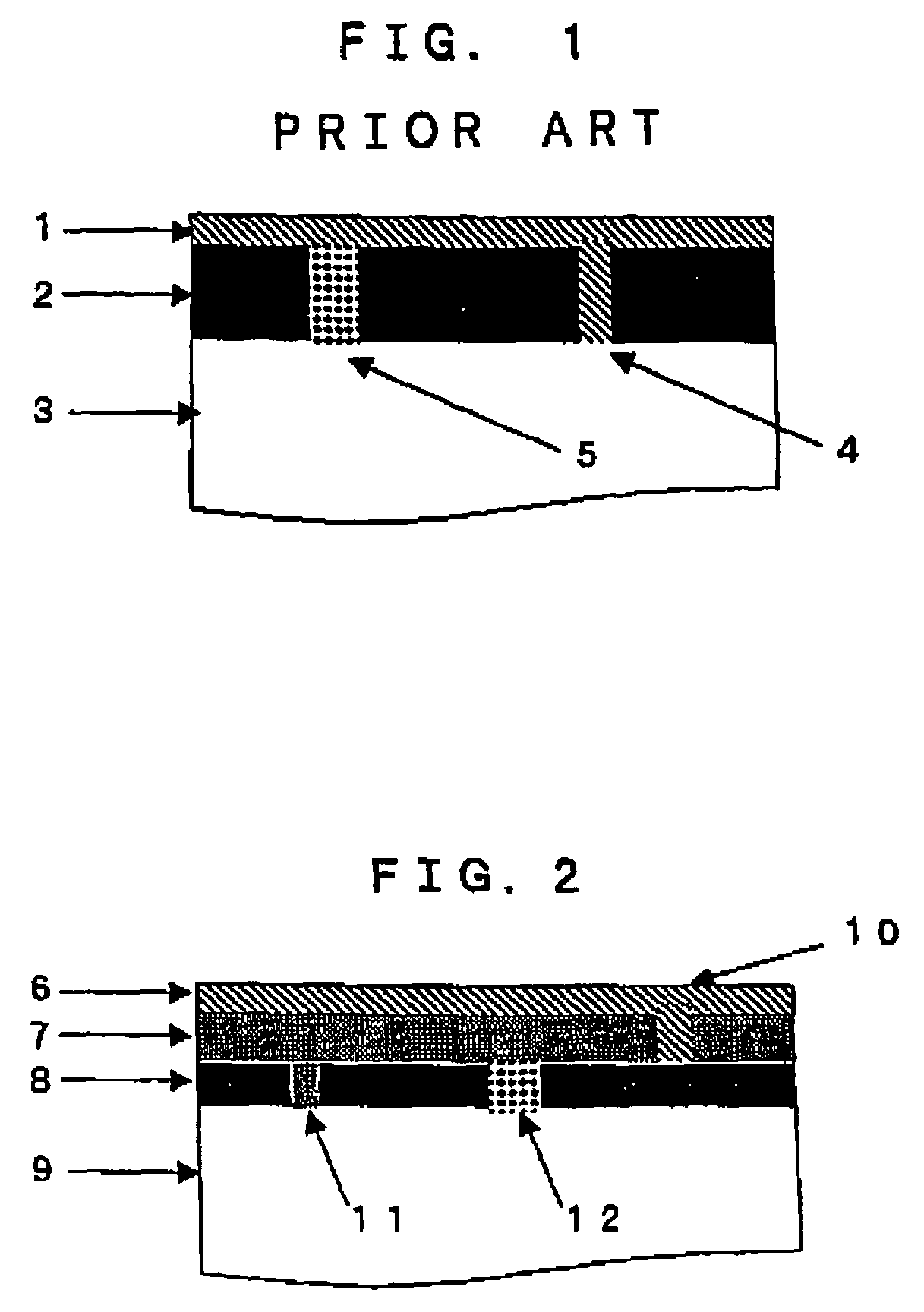Cutting tool with sensor and production method therefor
a technology of cutting tool and sensor, which is applied in the direction of shaping cutters, metal-working equipment, turning machine accessories, etc., can solve the problems of inability to provide satisfactory sensitivity and reliability, difficult quantitative determination of in-process wear amount, and inability to directly observe the wear of the tool during the machining in the machining environment. , to achieve the effect of improving the insulation reliability of the insulation film
- Summary
- Abstract
- Description
- Claims
- Application Information
AI Technical Summary
Benefits of technology
Problems solved by technology
Method used
Image
Examples
example 1
[0070]Five samples according to Example 1 (Samples 1) were each produced in the following manner. An Al2O3—TiC ceramic substrate was employed as an electrically conductive substrate. An aluminum oxide film having a thickness of 3 μm was formed on the substrate by sputtering for formation of a first insulation layer for insulating an electrically conductive film from the electrically conductive substrate. More specifically, a high-frequency sputtering apparatus employing an Al2O3 target was used for the sputtering. In an Ar atmosphere, 3-minute pre-sputtering, 12-minute etching on the substrate and 15-minute pre-sputtering for cleaning the target were carried out, followed by 60-minute main sputtering for the formation of the first insulation layer.
[0071]Subsequently, another aluminum oxide film having a thickness of 3 μm was formed on the first insulation layer by sputtering for formation of a second insulation layer. More specifically, a high-frequency sputtering apparatus employin...
example 2
[0074]Five samples according to Example 2 (Samples 3) were each produced in the following manner. An Al2O3—TiC ceramic substrate was employed as an electrically conductive substrate. An aluminum oxide film having a thickness of 3 μm was formed on the substrate by sputtering for formation of a first insulation layer for insulating an electrically conductive film from the electrically conductive substrate. More specifically, a high-frequency sputtering apparatus employing an Al2O3 target was used for the sputtering. In an Ar atmosphere, 3-minute pre-sputtering, 12-minute etching on the substrate and 15-minute pre-sputtering for cleaning the target were carried out, followed by 60-minute main sputtering for the formation of the first insulation layer. Subsequently, another aluminum oxide film having a thickness of 5 μm was formed on the first insulation layer by sputtering for formation of a second insulation layer. More specifically, a high-frequency sputtering apparatus employing an ...
example 3
[0077]A sample according to Example 3 was produced in the following manner. An Al2O3—TiC ceramic substrate was employed as an electrically conductive substrate. An aluminum oxide film having a thickness of 1 μm was formed on the substrate by sputtering for formation of a first insulation layer for insulating an electrically conductive film from the electrically conductive substrate. More specifically, a high-frequency sputtering apparatus employing an Al2O3 target was used for the sputtering. In an Ar atmosphere, 3-minute pre-sputtering, 12-minute etching on the substrate and 15-minute pre-sputtering for cleaning the target were carried out, followed by 20-minute main sputtering for the formation of the first insulation layer. Subsequently, another aluminum oxide film having a thickness of 5 μm was formed on the first insulation layer by sputtering for formation of a second insulation layer. More specifically, a high-frequency sputtering apparatus employing an Al2O3 target was used ...
PUM
| Property | Measurement | Unit |
|---|---|---|
| Length | aaaaa | aaaaa |
| Length | aaaaa | aaaaa |
| Electrical resistance | aaaaa | aaaaa |
Abstract
Description
Claims
Application Information
 Login to View More
Login to View More - R&D
- Intellectual Property
- Life Sciences
- Materials
- Tech Scout
- Unparalleled Data Quality
- Higher Quality Content
- 60% Fewer Hallucinations
Browse by: Latest US Patents, China's latest patents, Technical Efficacy Thesaurus, Application Domain, Technology Topic, Popular Technical Reports.
© 2025 PatSnap. All rights reserved.Legal|Privacy policy|Modern Slavery Act Transparency Statement|Sitemap|About US| Contact US: help@patsnap.com



